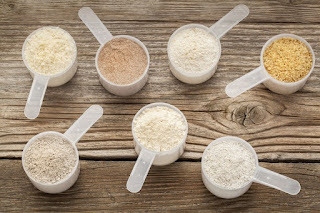1.
What are composite flours (CFs)? What are they developed and produced for?
Tuberous plants rich in starch such as cassava, yams and sweet
potatoes that grow in the dry regions of the world are not suitable for making
conventional baked products on their own, but they can be put to good use in
combination with wheat flour. This encourages the growing of local plant
species, saves on hard currency and improves the supply of protein to the
population.
2. What is the difference between composite flours (CFs) and
ready-mixed flours?
Whereas ready-mixed flours contain all the durable ingredients of the
recipe for a specific baked product, CFs are just a mixture of different flours
from plants rich in starch and protein, with or without wheat flour, for
certain groups of baked goods.
3. What baked goods can be made with CFs?
In principle all baked goods can be made with composite flour, but the
loss of quality with yeast-risen products is often considerable. Pastry goods,
on the other hand, can tolerate a larger proportion of non-wheat flour.
4. Is it possible to compensate for the quality deficits of CFs with
the aid of flour improvers?
Ascorbic acid, potassium bromate and enzymes are effective with CFs
too. DATEM, CSL and GMS also greatly enhance the results of baking. The key to
good processing characteristics is the proportion of gluten, which is reduced
by the addition of non wheat flours. Measures to enhance the gluten and also
the addition of vital wheat gluten improve the bakeability of the flour. The
target substance for flour improvement with CFs (and with most mixtures of
wheat and rye flour too) is always the wheat flour content. The non-wheat flour
merely has a “diluting” effect in the flour improver.
5. What are the limits to the use of cassava/maize/millet etc?
A normal wheat flour tolerates 10% non-wheat flour with little loss of
quality, but 20% already impairs the quality noticeably even if the flour is
fully treated. Nevertheless, bread with 30% cassava, for example, still has quite
acceptable eating properties.
6. Can CFs be used in programmes to combat coeliac disease?
Yes, provided that all grain containing gluten is avoided.
7. Can CFs be evaluated with the usual rheological methods?
Yes, if the proportion of non-wheat flour does not exceed 30%. But new
specifications have to be made out for the CF.

إرسال تعليق